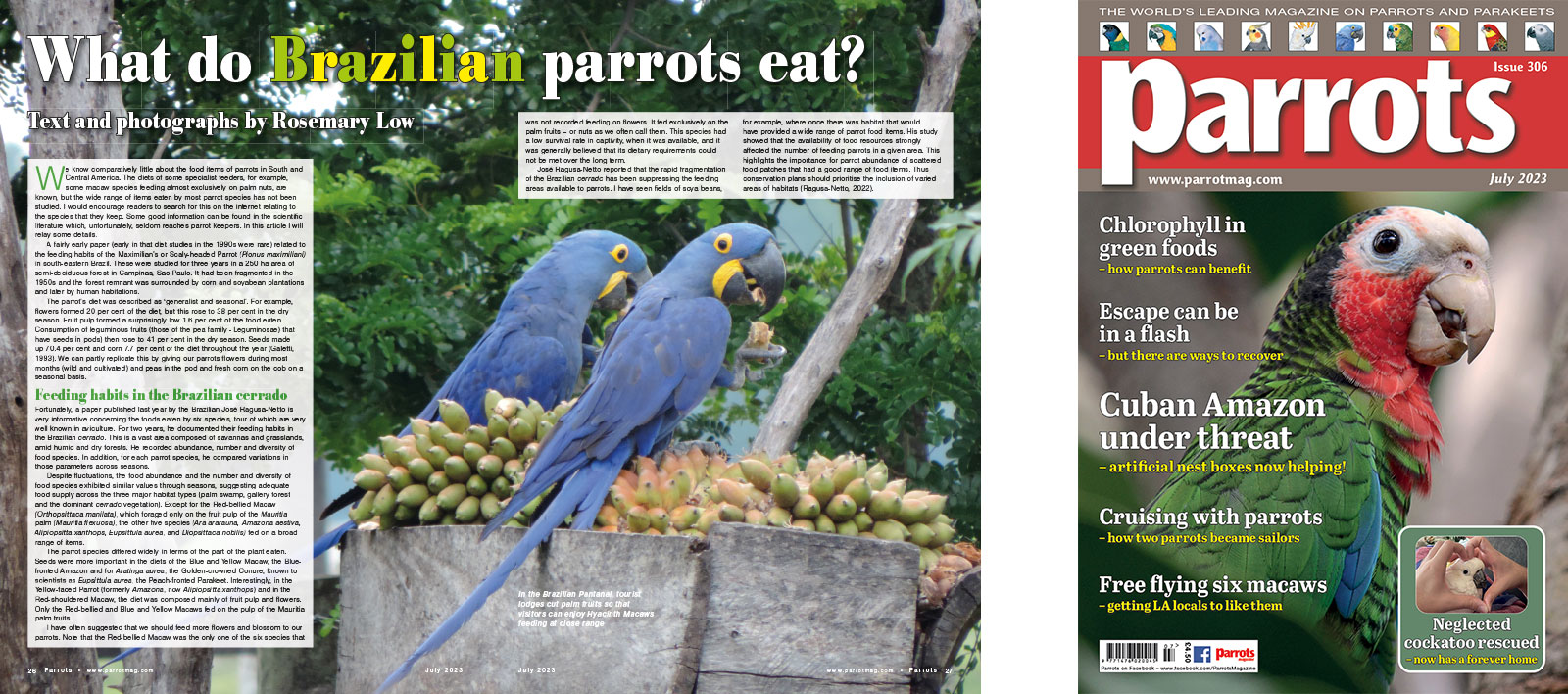
By Rosemary Low
We know comparatively little about the food items of parrots in South and Central America. The diets of some specialist feeders, for example, some macaw species feeding almost exclusively on palm nuts, are known, but the wide range of items eaten by most parrot species has not been studied. I would encourage readers to search for this on the internet relating to the species that they keep. Some good information can be found in the scientific literature which, unfortunately, seldom reaches parrot keepers. In this article I will relay some details.
A fairly early paper (early in that diet studies in the 1990s were rare) related to the feeding habits of the Maximilian’s or Scaly-headed Parrot (Pionus maximiliani) in south-eastern Brazil. These were studied for three years in a 250 ha area of semi-deciduous forest in Campinas, Sao Paulo. It had been fragmented in the 1950s and the forest remnant was surrounded by corn and soyabean plantations and later by human habitations.
The parrot’s diet was described as ‘generalist and seasonal’. For example, flowers formed 20 per cent of the diet, but this rose to 38 per cent in the dry season. Fruit pulp formed a surprisingly low 1.6 per cent of the food eaten. Consumption of leguminous fruits (those of the pea family - Leguminosae) that have seeds in pods) then rose to 41 per cent in the dry season. Seeds made up 70.4 per cent and corn 7.7 per cent of the diet throughout the year (Galetti, 1993). We can partly replicate this by giving our parrots flowers during most months (wild and cultivated) and peas in the pod and fresh corn on the cob on a seasonal basis.
